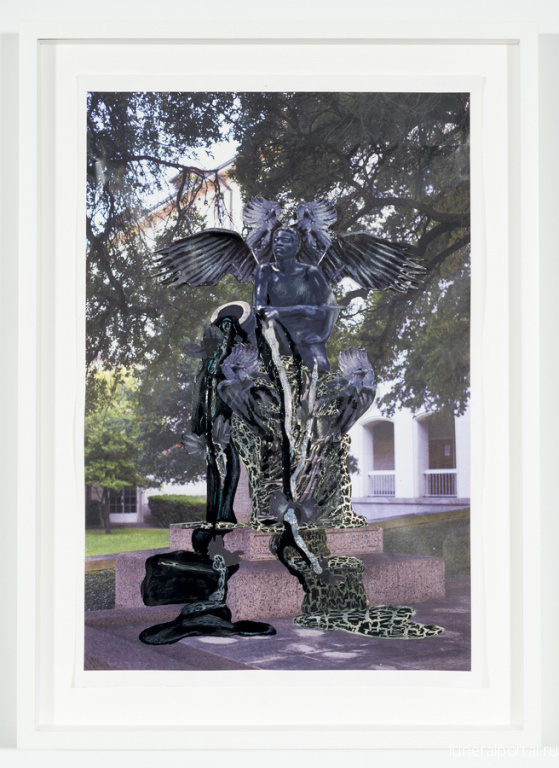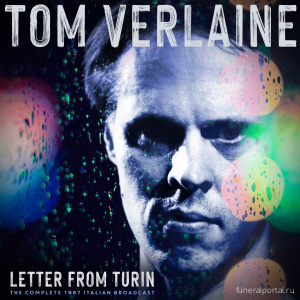Now You See Me - Fearless!, 2019. Acrylic paint, resin, graphite, nail polish, plastic, glass beads, inkjet prints and paper. 28 3/4 x 22 1/2 in. Nicole Awai. Lesley Heller Gallery https://www.lesleyheller.com/artists/nicole-awai
https://vimeo.com/375287186
Mikhaile Solomon
As a member of the Caribbean and African American diasporas, I think a lot about the place that I, and other members of these diasporas, occupy. I consider how we are impacted by and responding to ongoing global dynamics—unresolved histories, climate change, equity, education, joy. The artists I’ve selected here are largely from the Caribbean and the United States and share their responses to these dynamics through the narrative arc of their art practices.
Morel Doucet
B. 1990, Pilate, Haiti. Lives and works in Miami.

Morel Doucet, Maroons Over Green Mountains, 2019. Photo by Pedro Wazzan. Courtesy of the artist and Galerie Myrtis.
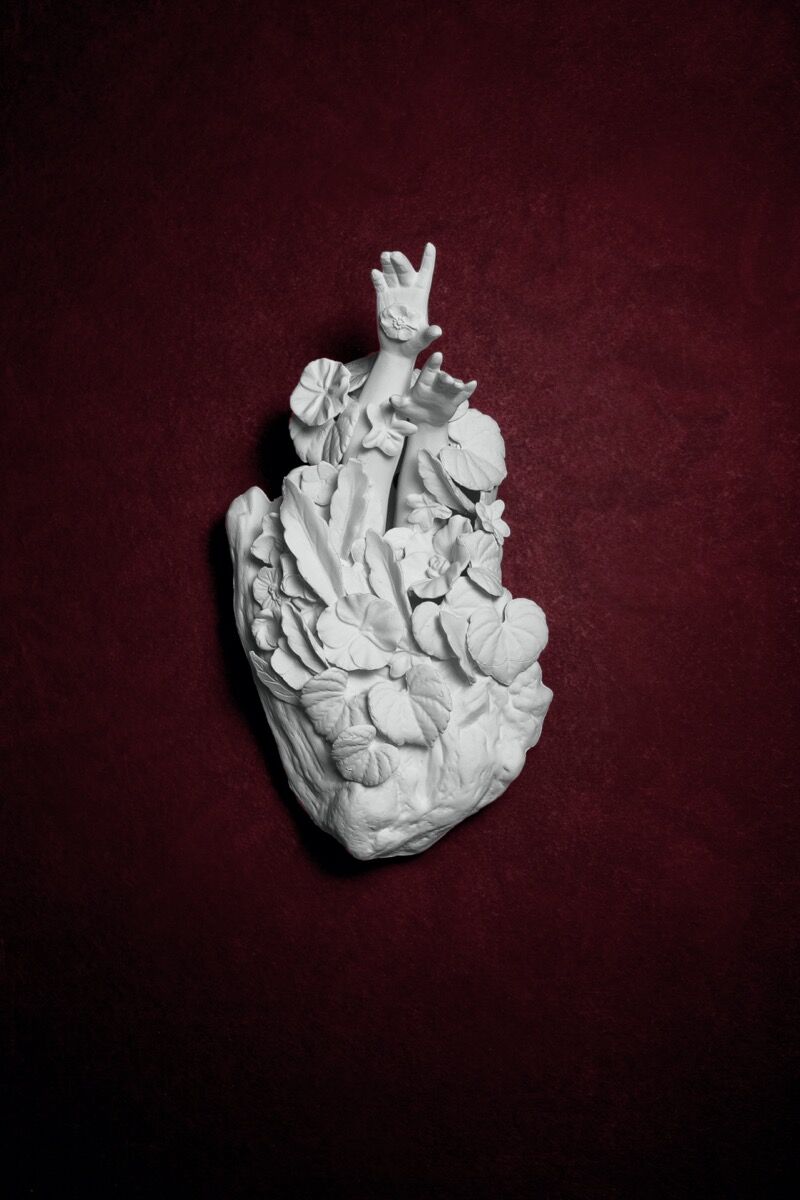
Morel Doucet, Fall from grace (Beautiful Absence), 2019. Photo by David Gary Llyod. Courtesy of the artist and Galerie Myrtis.
Morel Doucet utilizes ceramics, drawings, and prints to address a cadre of issues including climate change, climate gentrification, migration, and displacement within Black diasporic communities. Doucet, who is originally from Haiti and now based in Miami, is witness to such issues as they impact communities near and dear to him.
“I consider many of my pieces to be double-edged swords,” Doucet has said, “enticing, and luring the viewer with beauty on one end while reminding them of their complicity in the destruction of our shared environment on the other.”
His first major solo show was presented at the African Heritage Cultural Arts Center in Liberty City, Miami, a community currently experiencing the impacts of climate gentrification. Doucet addressed these issues through allegory, illustrating the very clear and present realities of our climate crisis, including the decline and demise of our coral reefs and marine biodiversity. Humanity’s decline was not exempt.
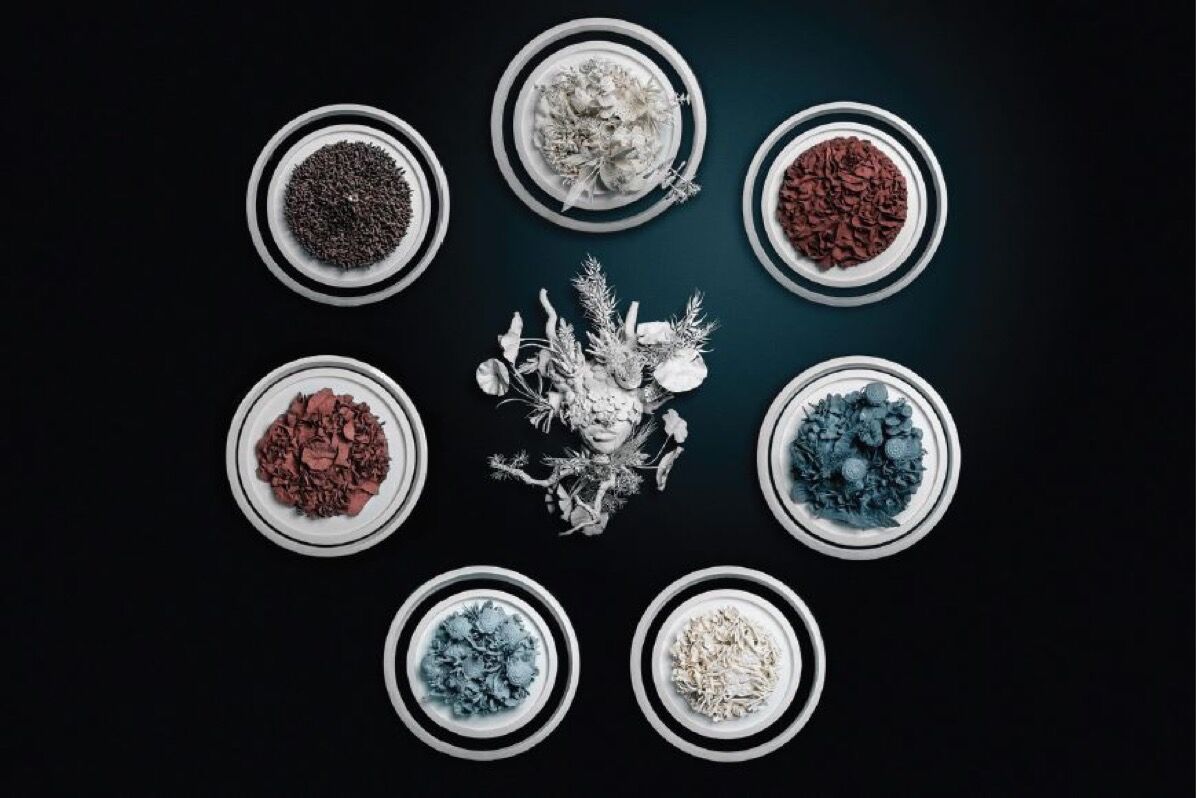
Morel Doucet, Clock Work, 2015. Photo by David Gary Lloyd. Courtesy of the artist and Galerie Myrtis.
The exhibition’s hypnagogic title, “White Noise: When Raindrops Whisper and Moonlight Screams in Silence,” resonates with Doucet’s visual language, which is rooted in magical realism. His ceramic pieces include teapots rendered in a colonial style, elements resembling flora and fauna, and anthropomorphic assemblages that seem to combine human beings with marine life. Doucet’s exhibition is an archeological dive beneath the ocean’s surface cataloging artifacts that reference a colonial past, a difficult present, and an uncertain future, whilst simultaneously offering moments for political and societal critique and discourse.
Doucet’s work has been exhibited in numerous exhibitions both in the U.S. and abroad, including “Transitional Nature,” curated by Amy Galpin at the Patricia & Phillip Frost Art Museum; “Haiti a La Mode,” curated by Eveline Pierre for the Haitian Heritage Museum; “More than That: Diversity within Diversity,” curated by ceramist Roberto Lugo
for the Flaten Art Museum; and “Building Bridges: The Politics of Love, Identity and Race – Part 2,” curated by Myrtis Bedolla for the 13th Havana Biennial in Havana, Cuba.
Christa David
B. 1979, Orangeburg, South Carolina. Lives and works in New York and Atlanta.
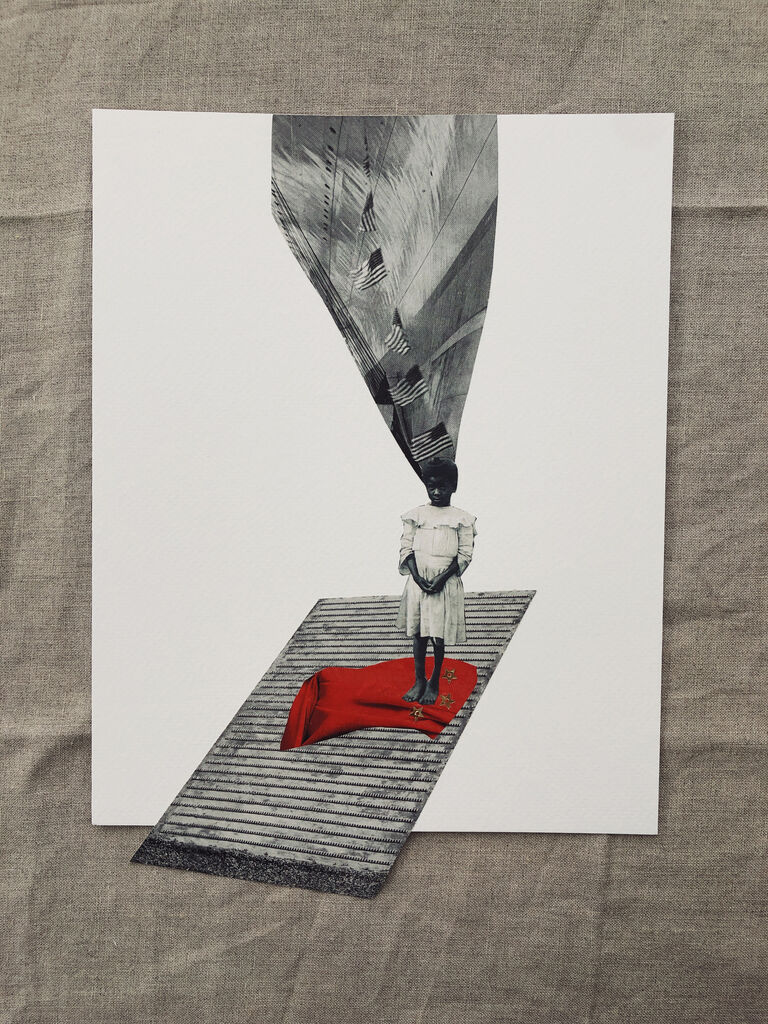
Christa Davidmy country, my country, she wailed., 2020. Dominique Gallery. On hold
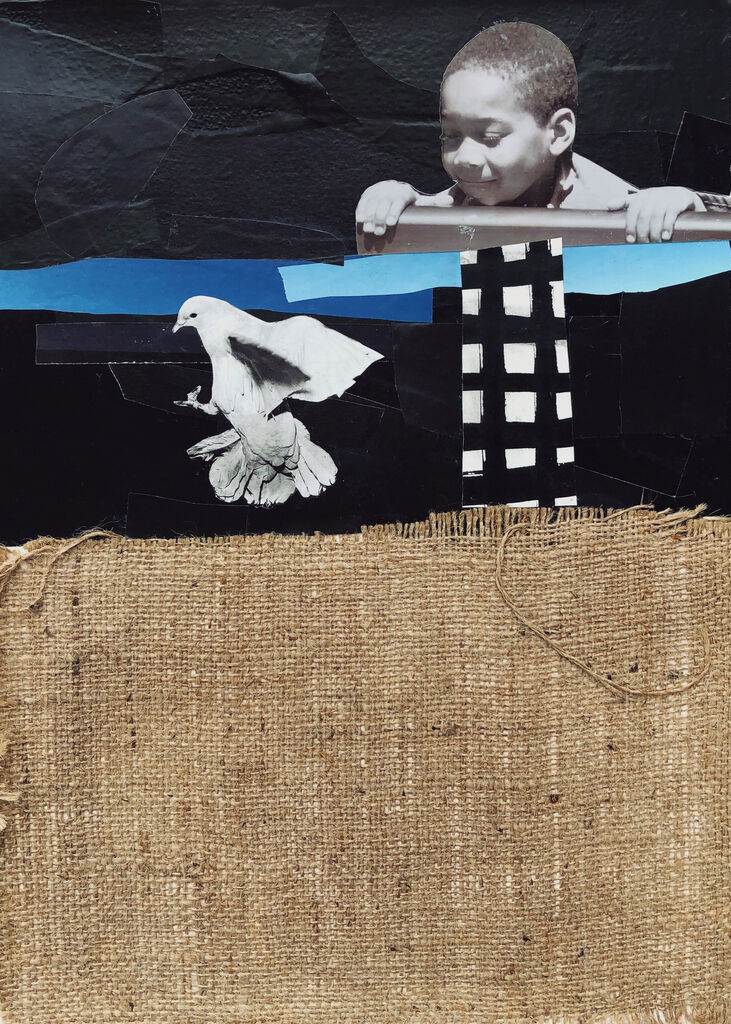
Christa Davidbefore things became hard for us, 2018. Dominique Gallery.
Christa David uses collage and abstraction to explore the complexities of, critically examine, and visualize a fortuitous outlook for African American life.
Some of her works are haunting reminders of complexes (prison-industrial, gun violence, or gentrification) that have been long actors of oppression in the African American road to freedom. Works like The Storm that Never Ended (2018), When the Smoke Clears (2018), and Make Me Wanna Holler The Way They Do My Life (2016) are constructed as visual critiques of America’s complicity in perpetuating inequity. David channels the inimitable scholarship of James Baldwin for inspiration, such as this quote: “I love America more than any other country in the world, and exactly for this reason, I insist on the right to criticize her perpetually.”
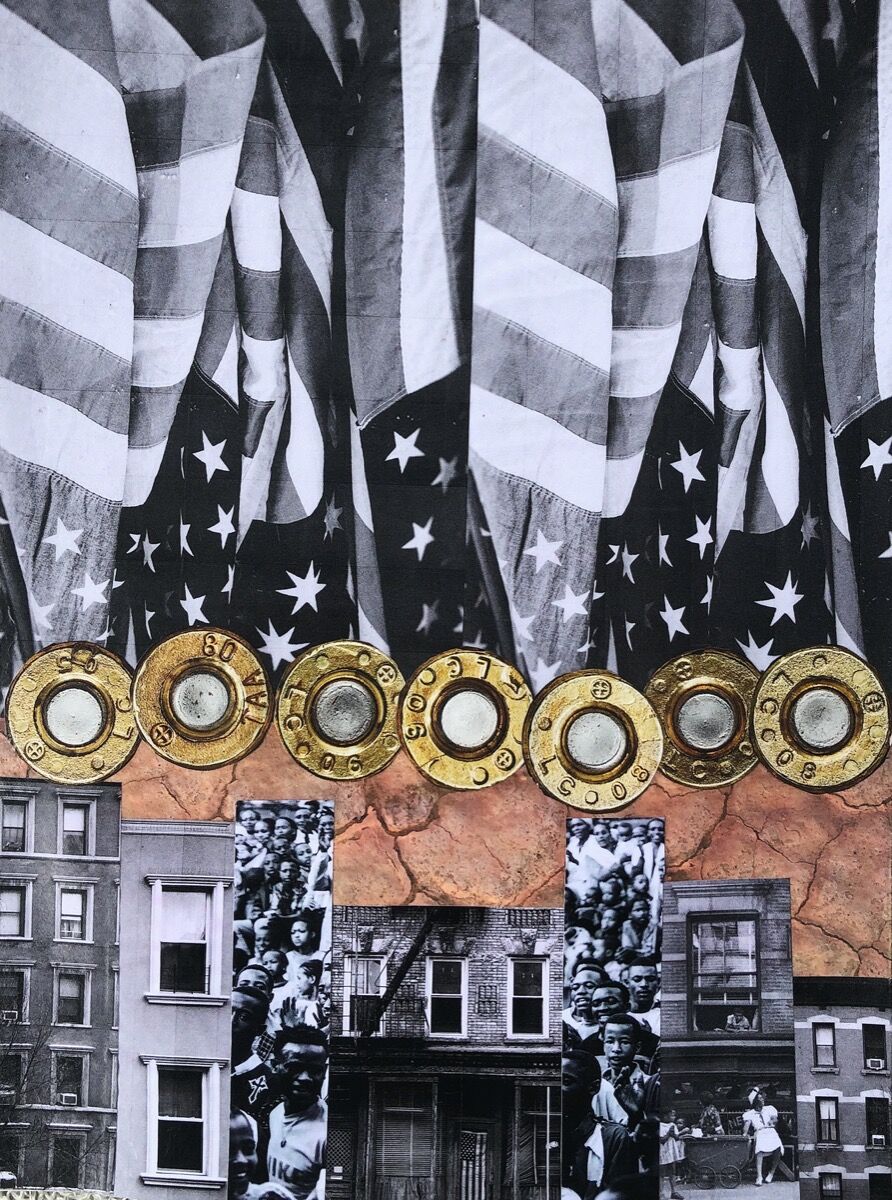
Christa David, the storm that never ended, 2018. Courtesy of the artist.
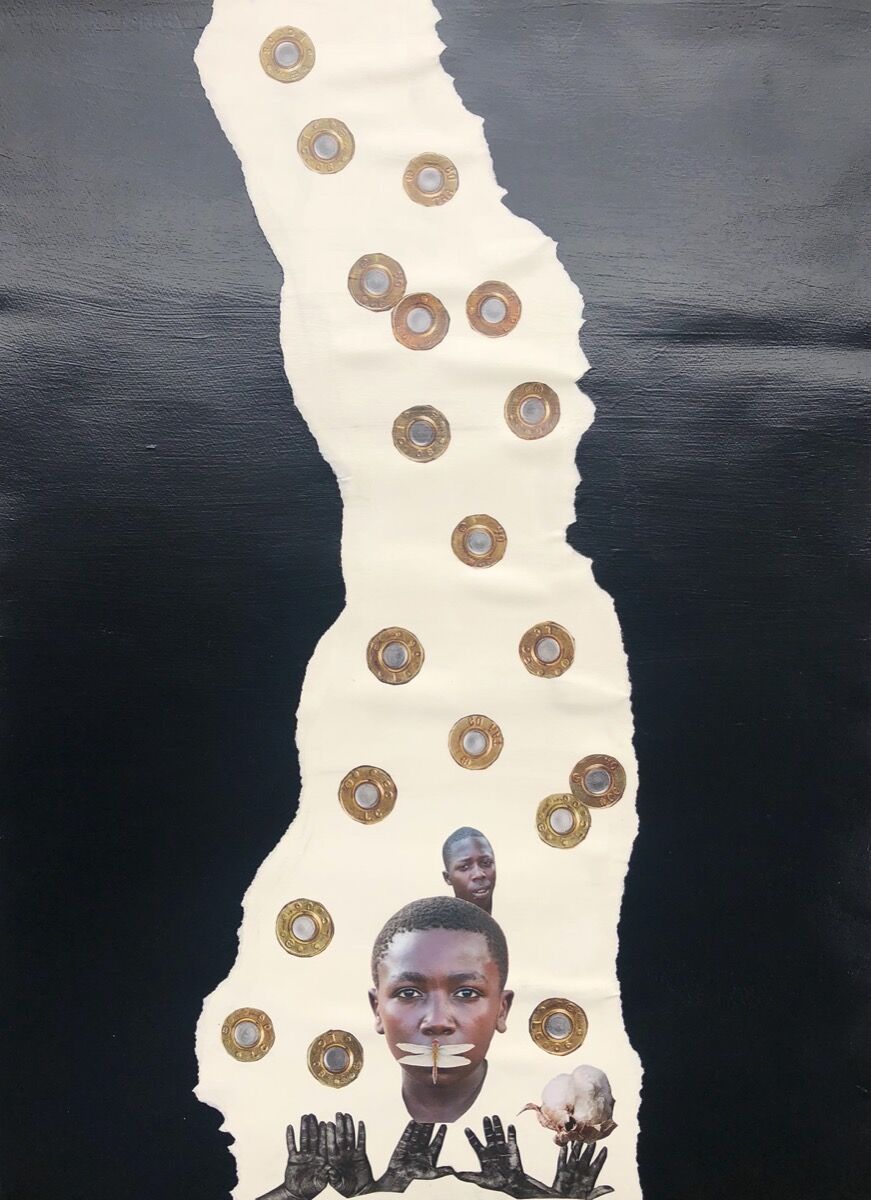
Christa David, when the smoke clears, 2018. Courtesy of the artist.
Most of her collages function as metabolizing forces; she excavates historical archives, vintage and contemporary magazines, and newspapers as though they were fossils in an archaeological dig. She reassembles these found images to construct utopian landscapes or scenes of African Americans with renewed energy, dancing on new soil rendered colorful by the acknowledgment of humanity, the realization of justice, and the promise of a brighter future for the global African community.
The subjects of her collages are African Americans; women, men, and more often children poised as heralds of hope. In This Joy That I Have The World Didn’t Give It And The World Can’t Take It Away (2019), a child emerges from a chrysalide with fully developed wings and an unbridled smile.
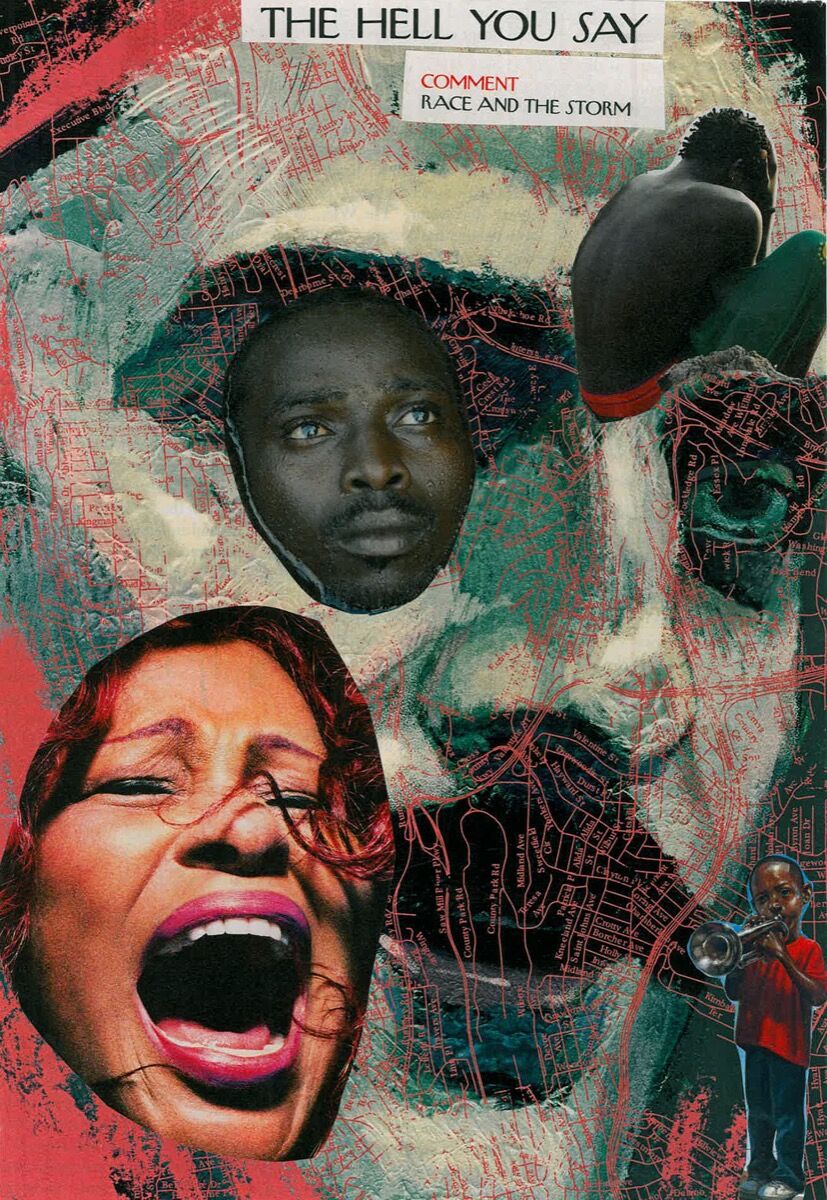
Christa David, make me wanna holler the way they do my life, 2016. Courtesy of the artist.
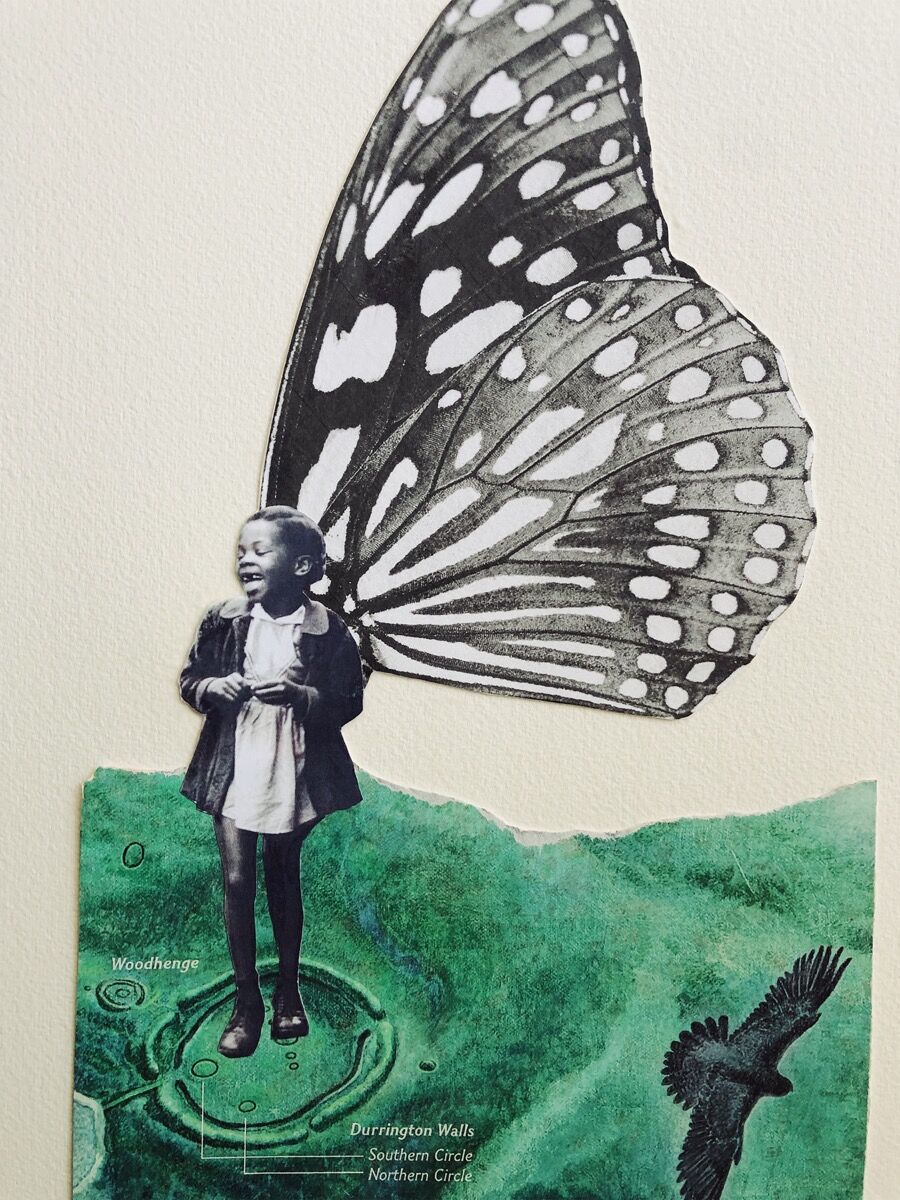
Christa David, this joy that i have the world didn't give it and the world can't take it away, 2019. Courtesy of the artist.
“I use my work to sort out my feelings and thoughts about the complex and enduring mark of structural racism in the United States and its impact on my life/body and the lives/bodies of those who look like me,” David writes in her artist statement. “Currently, my collage work focuses on the stories of Black and Brown people (myself included) existing in and outside of spaces (material and immaterial)—spaces created by others and spaces created by us.”
David is a two-time graduate of Columbia University with a bachelor of arts degree and a master of public health degree. Her work is held in private and public collections throughout the United States, including the prominent David C. Driskell Center. Most recently, her work was exhibited at All Together Now Gallery in Atlanta, Georgia.
Nicole Awai
B. 1966, Port of Spain, Trinidad and Tobago. Lives and works in New York.
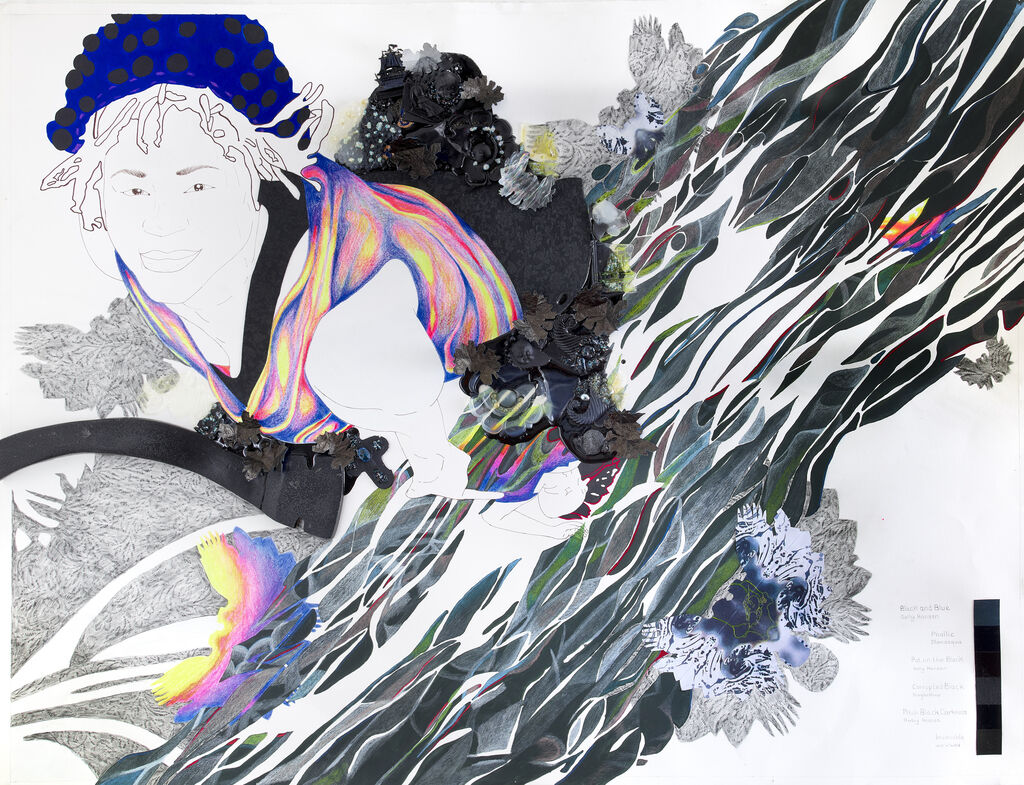
Nicole AwaiInvincible, 2019. Lesley Heller Gallery
Nicole Awai is a multimedia artist who works between the representation and abstraction. A primordial ooze is a regular protagonist in her work; it’s a medium for the confluence of our histories, our physical existence, as well as a space and place in the Americas. The La Brea Pitch Lake in her country of birth, Trinidad, is a site of reference for much of her artistic practice.
In the “Vistas” series, a foundational body of work, both conceptually and materially, Awai utilizes nonconventional materials including nail polish, nylon mesh, doll parts, and synthetic paper to illustrate time’s elasticity and ephemeral quality of nature.
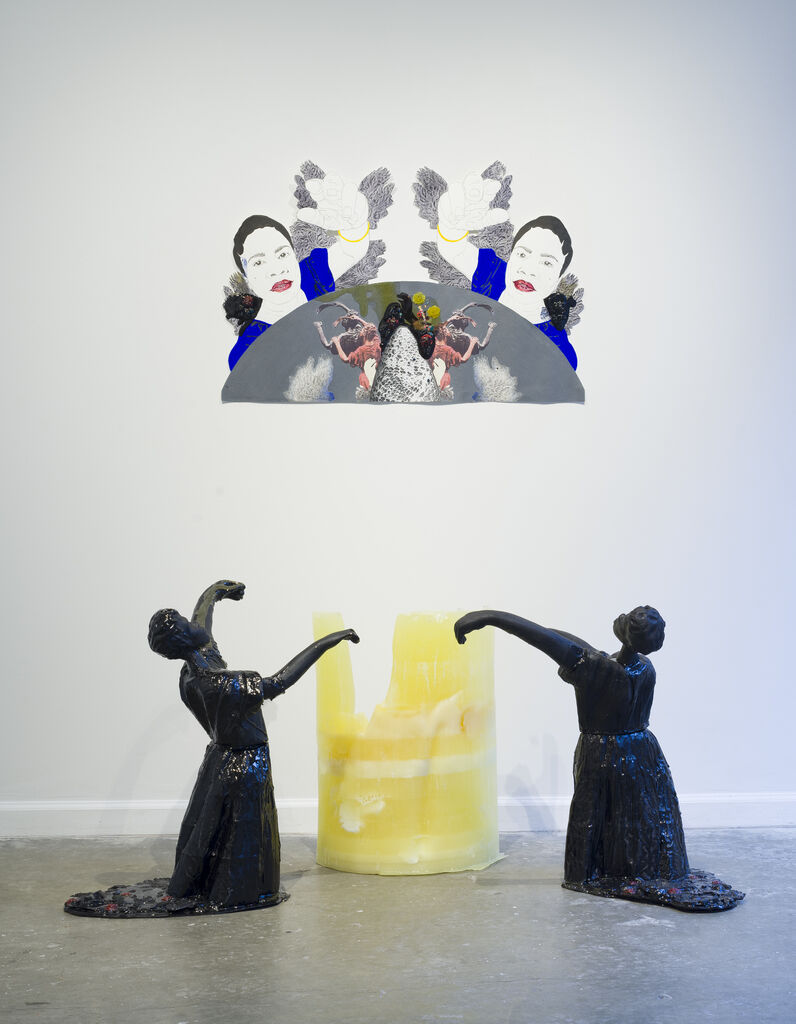
Nicole AwaiAbstrahere - Drawn Away, 2019. Lesley Heller Gallery
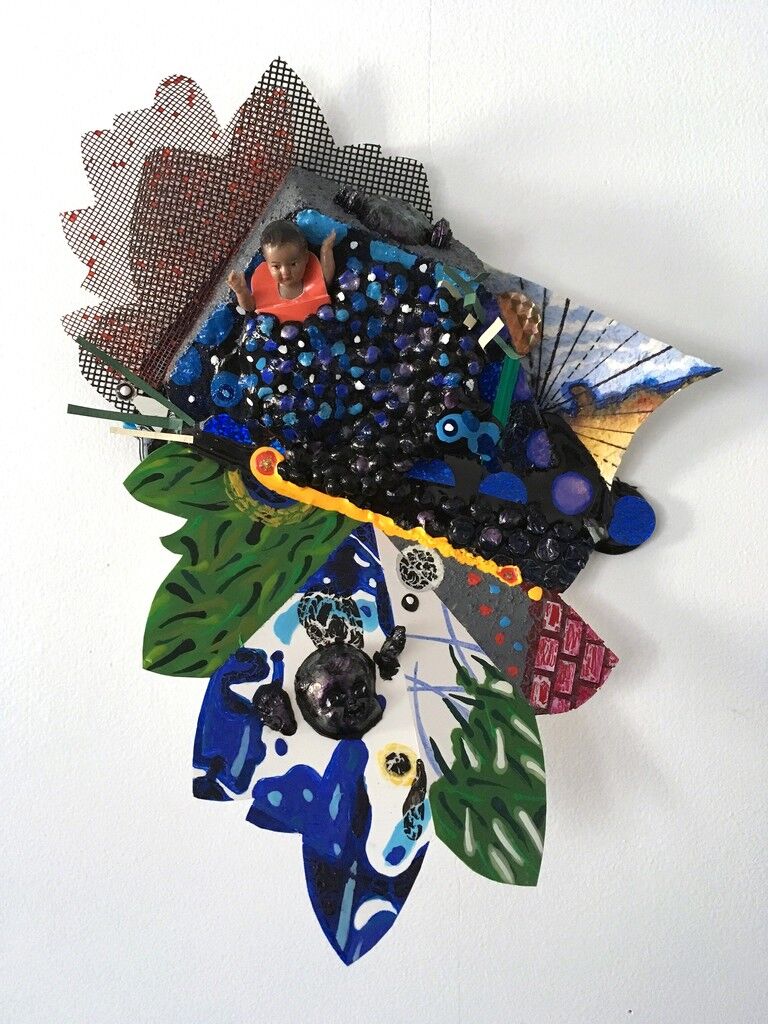
Nicole AwaiVista 7.3: No Refuge, No Recourse, 2017. Lesley Heller Gallery
“My work has been oozing for the last 20 years,” Awai has said. “That ooze has been substantially black in color since 2008. In my work there’s always been many layers of implication and meaning sometimes even beyond what I’m aware of. An early influence on my work was printmaking—layers of thought, process, labor, and materials. It was around 2008 that I understood more clearly that the ooze is simultaneously a site of demise and rejuvenation.”
In 2018, Awai was commissioned by the New York Times to imagine a contemporary monument—alongside fellow artists including Dread Scott, Kenya (Robinson), Titus Kaphar, Ekene Ijeoma, and Ariel René Jackson—in response to the first anniversary of the riots in Charlottesville and recently removed monuments at different locations around the U.S. Awai envisioned The Spirit of Persistent Resistance of the Liquid Land (2018) for Austin, Texas; the proposed piece portrays a mythological figure, a ubiquitous form positing that monuments are fluid, and in folklore, especially Trinidadian folklore, monuments of freedom that transcend life and death.
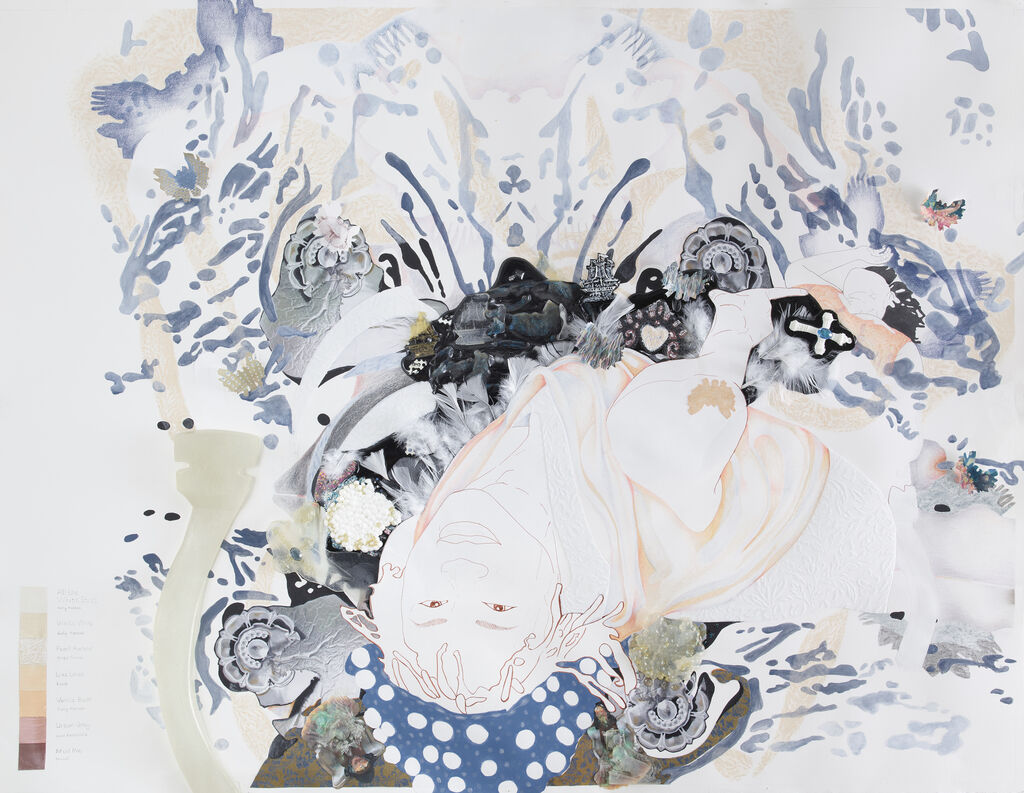
Nicole AwaiAll the White Stuff, 2019. Lesley Heller Gallery
Awai earned her master’s in multimedia art from the University of South Florida in 1996. She attended the Skowhegan School of Painting and Sculpture residency in 1997 and was an artist in residence at the Studio Museum in Harlem from 1999 to 2000. She was a featured artist in the 2005 Initial Public Offerings series at the Whitney Museum of American Art and was awarded the Joan Mitchell Foundation Painters and Sculptors Grant in 2011 and an Art Matters Grant in 2012. Her work has been included in seminal museum exhibitions nationally and internationally, including the traveling exhibition “Relational Undercurrents: Contemporary Art of the Caribbean Archipelago,” which originated at the Museum of Latin American Art, and the High Line Network exhibition “New Monuments for New Cities.”
Awai was a critic at the Yale School of Art in the department of painting and printmaking from 2009 to 2015, and is currently an assistant professor of painting and drawing at the University of Texas at Austin. As a Yale critic, Awai mentored several artists of note including Didier William, Njideka Akunyili Crosby, Abigail DeVille, and Mark Thomas Gibson. Her work is currently on view at the Museum of Contemporary Art Denver in “Citizenship: A Practice of Society,” a survey of politically engaged art made since 2016, which runs through February 14, 2021.
Deborah Jack
B. 1970, Rotterdam. Lives and works in Saint Martin and Jersey City, New Jersey.
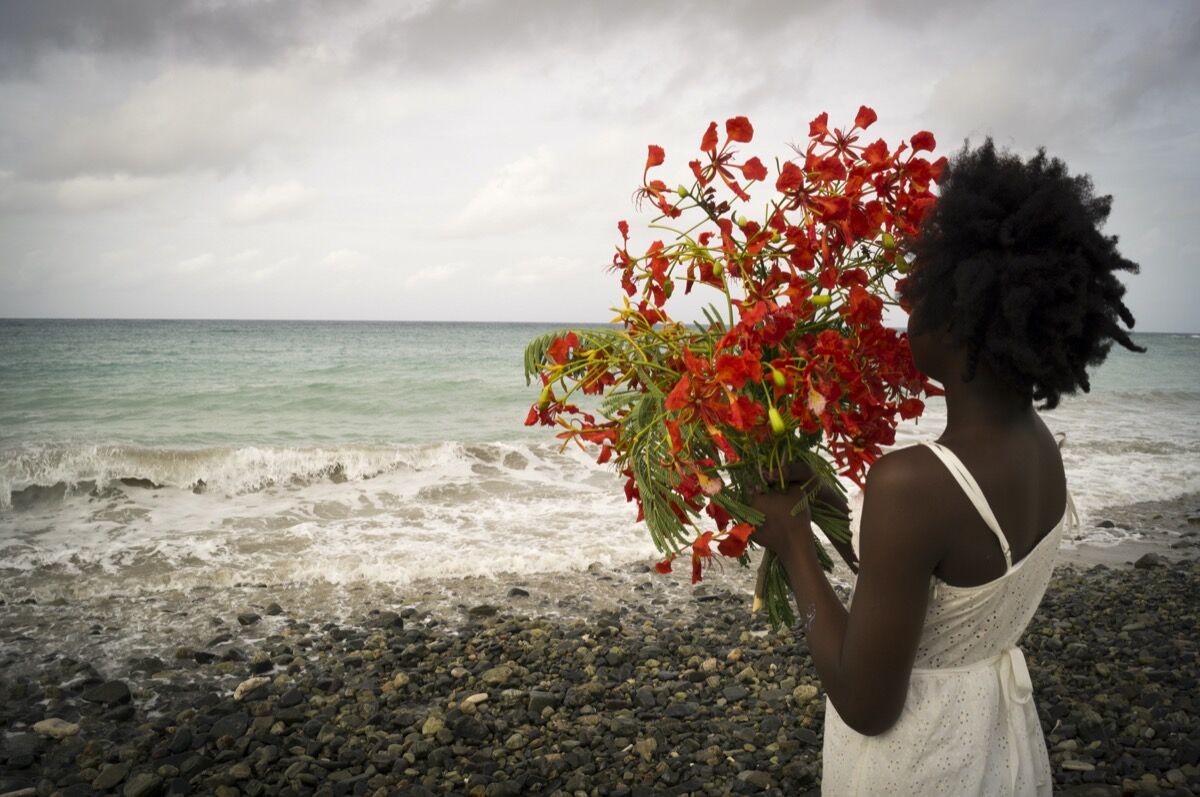
Deborah Jack, Untitled (looking out), from the series “what is the value of water if it doesn’t quench our thirst for,” 2014–17. Courtesy of the artist.
The ocean is a site for paradoxical occurrences; its shores serve as a repository for moments of joy and reflection. It is also a pernicious harvester of unforgiving storms, a resting place for lives not fully realized, a site for dreams deferred and memories lost. “It is a space ripe with potential and it is also a precipice,” wrote artist Deborah Jack in a statement for the exhibition “The Other Side of Now: Foresight in Contemporary Caribbean Art” at the Pérez Art Museum Miami. Jack explores the dichotomous nature of the sea, engaging around “a hybrid of requiems, re-memory, and memento mori.”
Her works—which span sound, installation, photography, text and, more recently, mixed media—explore transcultural existence, memory, the effects of colonialism, and mythology. Jack’s series “what is the value of water if it quenches our thirst to bloom… ”(2014–17) documents the journey of a young girl across Saint Martin, from its shores to its interior and back to its shores. She is the embodiment of ancestor and descendant. Some of the stills from her video installation work as in the water between us remembers (2016) series are black and white (Girl Walk, 2016), conjuring a looming nostalgia, while others are vibrant and colorful, portraying the young girl holding flowers in full bloom, suggesting possibilities for a glowing future (Untitled, looking out #1, 2014–16).
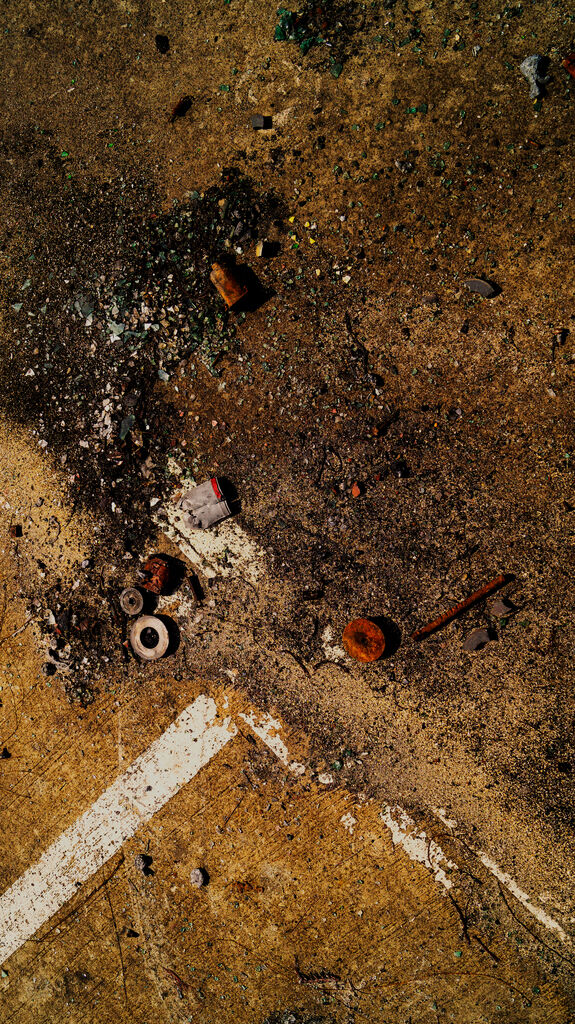
Deborah Jackthis time fire...revolutions and protest as aftermath 2, 2020. Pen + Brush
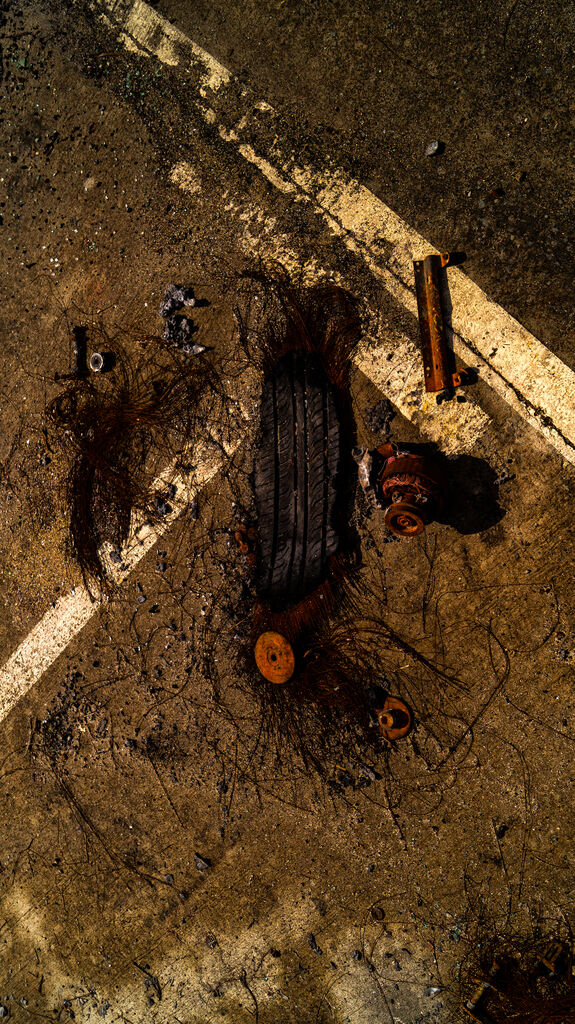
Deborah Jackthis time fire...revolutions and protest as aftermath 1, 2020. Pen + Brush
Hurricanes Irma, Jose, and Maria struck Saint Martin in rapid succession in 2017, the impacts of which were the catalyst for the creation of a digital video projection work entitled …our states of emergence see us looking for an inner shore to meet the coming surge, and then… (2017). Jack’s work also addresses the impacts of climate change, referencing the increased occurrences of hurricanes that have devastated the Caribbean archipelago, and what remains in its aftermath for its residents to resolve.
Jack’s work has been included in a number of esteemed exhibitions including “DNA of Water” at the Newhouse Center for Contemporary Art; the traveling show “Relational Undercurrents: Contemporary Art of the Caribbean Archipelago,” which originated at the Museum of Latin American Art in Long Beach, California;and “The Other Side of Now: Foresight in Contemporary Caribbean Art” at the Pérez Art Museum Miami. Jack is also an associate professor of art at New Jersey City University. Her work is currently on view in the reflective exhibition “Isolation to Revolution/Rebirth to Dissent” at Pen + Brush in New York.
Sheena Rose
B. 1985, Bridgetown, Barbados. Lives and works in St. Philip, Barbados.
Over the past 10 years, Sheena Rose has nurtured a robust practice that challenges an often one-dimensional understanding of Caribbean identity.
Her practice has evolved through various iterations, each in service of a sharper image of the Caribbean experience as she sees it. She skillfully devotes herself to developing her drawing technique; her library of sketchbooks is evidence of this prolific cultivation.
Rose’s work is a counterbalance to the widely distributed, outmoded image of the Caribbean, with its bucolic scenes of aeolian palm trees dotting the shore of the Windward Seas. She offers masterfully rendered wireframe drawings of Caribbean townscapes, as seen in the “Town” series (2009–19). The complexity of these drawings reflect the reality they portray. Rose occasionally takes her drawings a step further by animating them and applying her autobiographical narratives to her moving images.
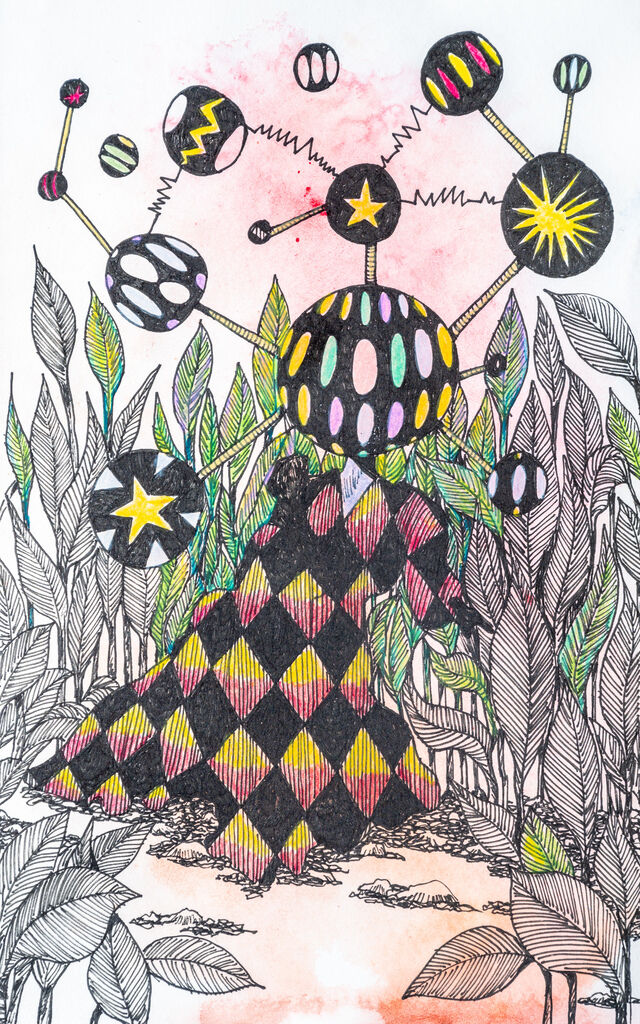
Sheena RoseCompendius Series: Quidditative, 2020. Koplin Del Rio

Sheena RoseCompendius Series: Malady, 2020. Koplin Del Rio
Subsequent bodies of work expound, with unmatched candor, endearingly illustrated cultural notes unique to Bajan life. The series “Sweet Gossip” (2012–present), with a color palette that reflects the artist’s effervescent personality, functions as a vibrant ode to Bajan parlance, but also an examination of stereotypes, history, gender, and daily interaction between residents of Barbados.
Rose’s practice is an iterative feedback loop vacillating between a cheeky critique of what is misunderstood about the Caribbean by onlookers. Her work reflects her steadfast and sometimes mystical process towards self-discovery and her projected vision for what life in the Caribbean can be, uninterrupted by the impositions of outside intervention.
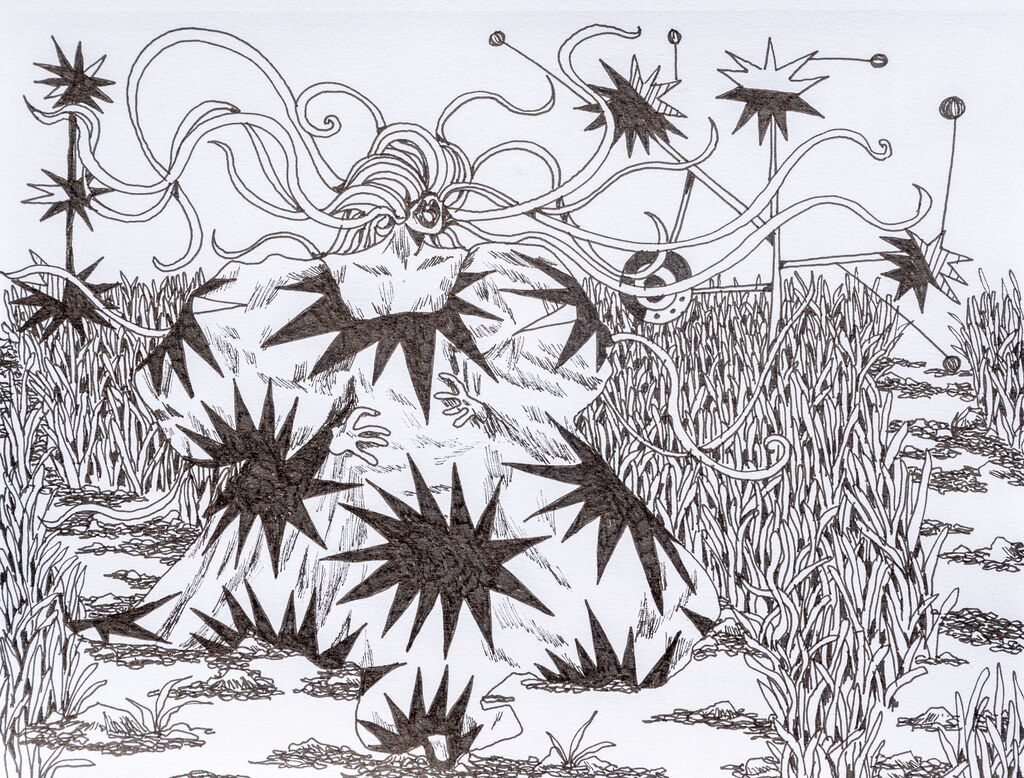
Sheena RoseCompendius Series: Delphic, 2020. Koplin Del Rio
Her trajectory has been meteoric. Recently, Rose presented a large 9-by-15-foot mural, Cognitive (2019), at the Pérez Art Museum Miami in an exhibition titled “The Other Side of Now: Foresight in Contemporary Caribbean Art,” curated by Maria Elena Ortiz and Dr. Marsha Pearce. The exhibition, centering around the contemporaneity of artists of the Caribbean diaspora, presented works in response to the question: “What might a Caribbean future look like?”
Rose was also awarded a commission by the Inter-American Development Bank to produce a two-story mural at its headquarters in Washington, D.C.
Mikhaile Solomon

